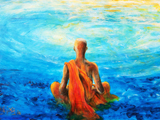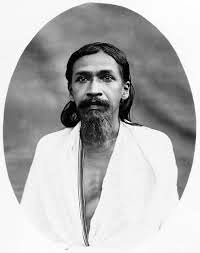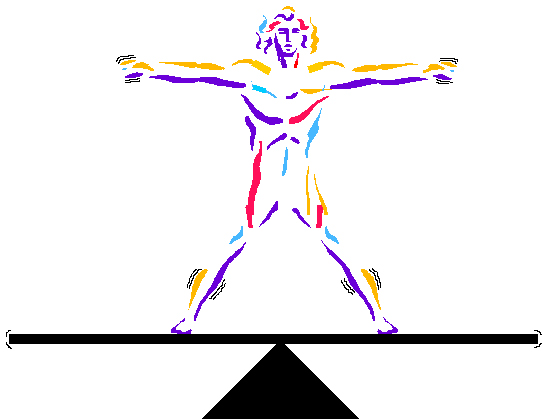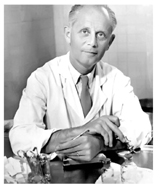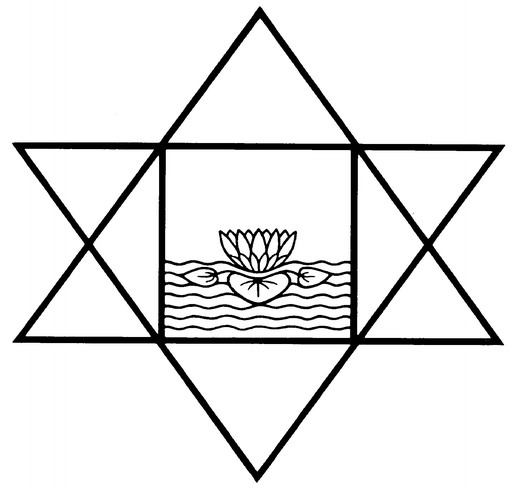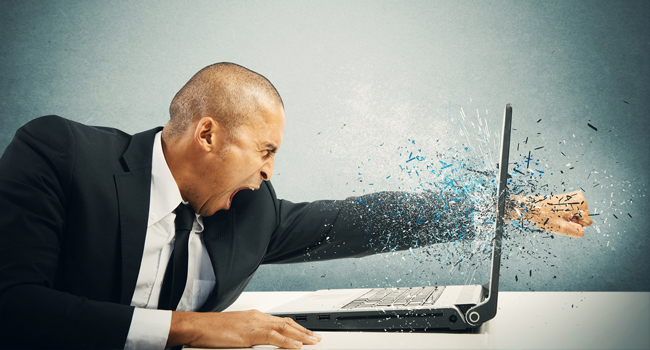Stress
The reaction to stress
Editorial note:
Stress is a common experience of all organisers. Even the inanimate world of matter has been found to experience stress. Though common and universal, stress has till now been regarded only as a dreaded something to which one has to somehow adjust. Recently, however, the trend in psychology is to look at the positive aspect of stress, called ‘eustress’, so as to discover in it an evolutionary force that by disturbing the lower equilibrium within and around us forces us to enter into a higher equilibrium. The article touches upon this issue briefly.The adaptive systems
Our physical body has not only to adjust to the external environment but has also to maintain an internal environment for proper functioning. The maintenance of a stable internal environment (homeostasis) is achieved through regulatory mechanisms that coordinate systems with divergent and conflicting functions. One such important regulatory mechanism is the Autonomic Nervous System which has to balance two components:(a) the sympathetico-adreno-medullary system that gears the organism for expenditure of bodily energy (catabolism) to cope with threats, and
(b) the parasympathetic system which helps in restoration and conservation of bodily energy (anabolism).
Faced with a stressful situation, the harmonious balance between the two components gets disturbed and one system temporarily comes to dominate the other. This is nature’s adaptive device to prepare an organism for offence or defence when under threat. One has to be physically and emotionally aroused to cope with an emergency. When a tiger growls, one cannot continue to recite poetry, one has to run. The sympathetico-adreno-medullary· system becomes dominant to mobilise bodily resources for the intense muscular effort needed. Sufficient blood must flow through the skeletal muscles, heart, lungs and brain; the heart must beat faster, the pupils should dilate for better vision while the urinary and rectal sphincters tighten and the more leisurely activities like intestinal movements and intestinal secretions slow down as part of the body’s economical adjustments. Besides, one cannot simultaneously be in a holiday mood — one is frightened, tense, anxious or enraged (one needs to be a yogi to remain composed) one must be both physically and emotionally vigilant to face the challenge.
A question often raised is, what responds to stress first — the body or the emotions? Some argue that emotional arousal is followed by physical arousal. William James believed the opposite to be true and proposed that feelings, including anxiety, were merely the individual’s conscious awareness of physiological processes antecedent to the emotion. The controversy remains unsolved.
From the perspective of Integral Yoga where personality is studied not as a finished product but along hierarchical planes of consciousness with universal forces acting at different levels, one could theorise that depending upon the level of interaction, either the emotions (vital) or the body (physical) could be aroused first or both could even be aroused together. In the Integral Yoga, the vital-physical is that plane of personality which is involved in the reactions of the nerves and the reflexive sensations and feelings(1). Sri Aurobindo elaborated,
“It [the vital-physical] is also largely responsible for most of the suffering and disease of mind or body to which the physical being is subject in Nature”(2).
Return to the base-line
The tiger, however, cannot be allowed to growl for long and eventually a time comes when the danger ceases (one runs out of the forest). Logically this implies that when the stressful situation abates, the sympathetico-ad reno-medullary system must cease to dominate; the internal physical environment must revert to the status quo and the harmony should be re-established. This is just what should ideally happen to a healthy individual.The maladaptive trend
Unfortunately, sometimes or in some individuals, even after the external threat ceases to be relevant, the sympathetico-adreno-medullary system continues to be unnecessarily dominant for an extended period of time or a state of sustained emotional arousal continues, no more as an adaptive but as a maladaptive trend. Such a state is strenuous for both the physical and mental health of the individual. As a result, a host of illnesses can erupt, depending also on mediating variables like genetic predisposition, environmental influences, personality traits, organ vulnerability and psychological conflicts. Thus one may develop physical manifestations of generalised anxiety, a psychosomatic disease or an emotional disorder. Using the Mother’s description, one can ascribe such an illness to a functional imbalance. Once a person is ill, the illness itself acts as a new threat — a new stressor, exacerbating the disharmony and establishing a vicious cycle that entangles one as in a spider’s web.Psychological threats
The response of the homeostatic regulating mechanisms which prepare an organism to cope with an external threat is a protective device perfectly suited for the subhuman animal species and our forest-dwelling human ancestors. However, in our self-acclaimed ‘civilised’ society, many of the threats we face are in essence not physical but psychological. The probability of being physically devoured by tigers is less than facing threats from examinations, lawsuits, share market fluctuations, marital discords and unpredictable office bosses. Work overload, retirement, status change, social isolation, interpersonal conflicts, boredom, life-events or the demands of a changing society are more important stressors today. Besides, one has to face internal threats from unacceptable and unconscious conflicts and instinctual forces that have not been adequately ‘repressed’. There is the stress arising from the conflict between one’s achievements and ambitions, from the distortion of one’s self-image, from the inflated demands and insatiable desires of the ego. Scientists believe that usually such stressors are aversive events that most people would prefer to do without. If animals could be given a choice, they would either avoid these situations or escape.As a matter of fact, in a study we conducted on missing children and adolescents from well-to-do families in Calcutta, 42 per cent of the boys ran away to avoid the excessive stress of studies and 53 per cent of the girls eloped to avoid the stress of forced marriages (3). Unfortunately we lack the romantic vigour of adolescence and if we do not ‘run away’ by committing suicide, we become ill when overwhelmed by stress.
It is interesting to note that we react to psychological threats in the same way as we react to a physical threat. Selye, one of the pioneers of stress research, finds that psychological events can produce the same stress responses as physical stressors ( 4). This means that whatever may be the source of the threat, most of us continue to physically and emotionally react to the stressors of modern life in the same way that we did as inhabitants of the wild – a habitual response which we now find difficult to unlearn. If this be true, then, obviously, in the area of stress reaction, the remarkable elevation in biological status is yet to be satisfactorily accompanied by a progressive elevation in Consciousness. It is high time we outgrew our habitual reactions and responded with more maturity to stress.
Man is a mental being and we do of course psychologically react to stress, though this reaction appears immature. In fact, we use a number of psychological manoeuvring techniques like blaming others (projection), minimising the importance of the situation (denial), or avoiding the stressor (repression) (5). Such skills are based on internal defence mechanisms.
The study of psychopathology has shown how the use of defence mechanisms can in turn be ecompensatory and give rise to mental illness. In the Integral Yoga, psychological defence mechanisms are considered to be features of the vital mind. One must acknowledge that our present coping skills are at best compromise formulas that do not aim at mastery – one remains at the same level of consciousness.
The integral approach
Therapists are busy with methods that could help us to face ‘stress without duress’. None, however, feels the necessity of doing away with the stress reaction altogether. It is too utopian to surpass; it is easier to repress.The Integral Yoga which envisages not only a mechanical evolution of forms but also a psychological evolution of consciousness holds the promise that the hiatus between our achieved biological status and an idealised utopian state of perfection can be progressively bridged. Instead of makeshift compromises that may break down at any point, a radical transformation of consciousness can alone help us to unlearn and outgrow our habitual reaction to stress. This would free us from stress-linked diseases.
The Mother points out:
“ ... And it is only with this spiritual capacity of rising to a higher level and replacing the animal’s unconsciousness by a spiritual super-consciousness that there comes into the being not only the capacity to see the goal of existence and to foresee the culmination of the effort but also a clear-sighted trust in a higher spiritual power to which one can surrender one’s whole being, entrust oneself, give the responsibility for one’s life and future and so abandon all worries.Of course, it is impossible for man to fall back to the level of the animal and lose the consciousness he has acquired; therefore, for him there is only one means, one way to get out of this condition he is in, which I call a miserable one, and to emerge into a higher state where worry is replaced by a trusting surrender and the certitude of a luminous culmination — this way is to change the consciousness(6).”
Surpassing the role of anxiety
It is interesting to note that while anxiety is still an important feature of the struggle for existence — it motivates us to goal-orientated activities and has a survival value in activating us during an emergency — anxiety fails to develop in a tamasic environment devoid of motivation and striving. This was demonstrated by Kral’s study of a concentration camp near Prague where stress-related disorders failed to develop, even in anxiety prone individuals, in the absence of the ruthless struggle for survival. On return home, some of the subjects again developed anxiety-related symptoms as they were back in a world of competition that required motivation and striving (7).The Integral Yoga points out that with a progressive evolution of consciousness, the soul personality (the Psychic being) will come forward to replace the ego-personality as the centre of our life. This would automatically surpass the source of our activation and motivation and give a new orientation to life.
It could be argued that an easier solution would be an elimination of all stress-provoking situations. This again is difficult to conceive; after all, a shift from the savage to the modern man has meant a shift from a largely physical to a largely psychological basis of stress. One cannot regress to a stressfree vegetative existence; the only other way for a life free of stressors is a gnostic society that comes as a culmination of a mutant transformation — a radical change of consciousness.
References
1.A.S. Dalal. Introduction in Living Within — The Yoga Approach to Psychological Health and Growth. Selections from the Works of Sri Aurobindo and The Mother. Pondicherry: Sri Aurobindo Ashram, 1987.
2. Sri Aurobindo. Letters on Yoga. Sri Aurobindo Birth Centenary Library, Vol. 24. Pondicherry: Sri Aurobindo Ashram, 1970.
3. S. Basu and S. Ghosh. ‘Children Lost and Found’. Calcutta: Bulletin, Psycho-Social Research and Training Centre, 1989.
4. H. Selye. Selye’s Guide to Stress Research, Vol. I. New York: Van Nostrand Reinhold. 1980.
5. R. Plutchik. Emotion: A Psychoevolutionary Synthesis. New York: Harper & Row, 1980.
6. The Mother. Questions and Answers, 1957-58. Collected Works of the The Mother, Vol. 9, p. 304. Pondicherry: Sri Aurobindo Ashram, 1977.
7. V.A. Kral. Psychiatric Observations under Chronic Stress. American Joumal of Psychiatry, 108: 185, 1951.
Dr. Soumitra Basu, a practising psychiatrist and member of SAIIIHR, is the Director of a school of psychology, Integral Yoga Psychology. He is also one of the editors of NAMAH.
Share with us (Comments, contributions, opinions)
When reproducing this feature, please credit NAMAH, and give the byline. Please send us cuttings.

